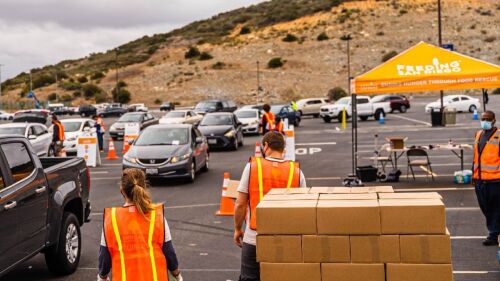We know San Diego has glowing beaches, but recently, they’ve been especially bright. Locals have been reporting neon blue water — a result of the naturally occurring sensation known as bioluminescence. And with some luck, you could catch a glimpse.
What causes bioluminescence?
Despite the color of its light, bioluminescence results from a phenomenon known as “red tides.” According to Scripps Institution of Oceanography, this is caused by a dinoflagellate called Lingulodinium polyedra, a plankton that’s particularly common in Southern California. This organism contains a so-called “sunscreen” that gives it a reddish-brown color.
On sunny days, the plankton gathers near the ocean’s surface, giving it a red hue (hence the name “red tides”). However, the bioluminescent glow results from a chemical reaction that emits a blue light, especially when the plankton is moved around quickly by waves at night.
Did you know? Researchers at Scripps called Lingulodinium polyedra “the Michael Phelps of the plankton world” because it moves so quickly. This speed allows it to develop dense blooms — leading to glowing waters.

Photographer Erik Jepsen makes a heart in the sand at Mission Bay, illuminated by bioluminescence.
Video via @erikjepsen
If you’re on a quest to see bioluminescence, there have been reports across the San Diego coast this month — including Torrey Pines, Carlsbad State Beach, and Mission Bay. However, the phenomenon could occur at any local beach.
If you want to see the glowing tides here are some things to know:
- There’s no way to forecast when red tides are coming, though methods are still being researched. However, data suggests events are more common in February through September.
- Event length is unpredictable, but bioluminescence often lasts one week to one month. If there was a glow yesterday, there’s a good chance of activity today.
- Bioluminescence is best seen in the dark. Find a beach with little man-made light, and wait about two hours after sunset.
- The plankton should not be consumed, but generally, it’s not harmful to humans.











